Brassicaceae
Brassica L.
Family:
Common names: mustard, cabbage, kale, rape
Species
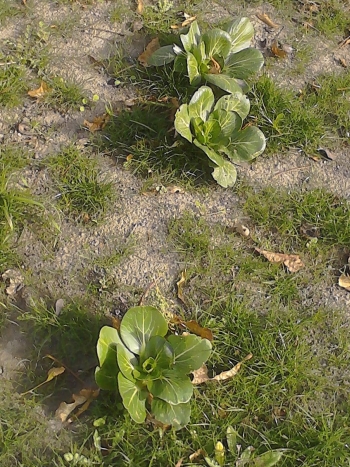
Brassica rapa L.
turnip, rape
Annual or biennial herbs with slender or stout tuberous taproots. Basal leaves lyrate-pinnatisect, upper stem leaves simple, obovate-oblong, almost cordate at the base, sessile, glabrous or nearly so. Racemes dense in flower, the open flowers generally overtopping the buds; lax in fruit. Flowers yellow, petals 6–10 mm long. Many forms have been in cultivation for centuries and the origin of the species is obscure. The different cultivars vary in colour and size of the seeds and in leaf shape and size. This species is naturalised in South Africa where it is widely distributed in Limpopo, Gauteng, Mpumalanga, Free State and the Eastern, Northern and Western Cape.
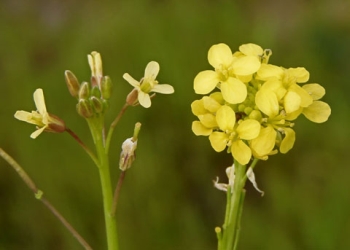
Brassica tournefortii Gouan
Saharan mustard
Erect, rather slender annuals up to 600 mm high. Basal leaves rosulate, petiolate, runcinate-pinnatisect, 4–12 jugate, up to 250 mm long, ciliate and densely hispid beneath. Upper leaves much smaller, sessile, oblong-lanceolate to linear, acute, entire or denticulate. Racemes terminal, at first dense, in fruit very lax. Flower pale yellow, sometimes tinged with mauve on fading. Fruiting pedicels erect to spreading or the lower ones almost recurved. Seeds globose, brown about 1 mm in diameter. The species is a native of the maritime Mediterranean region. Frequently collected in the Gordon’s Bay and Strand area in the Western Cape; reported to be common or abundant on sand dunes and in disturbed places in the Eastern, Northern and Western Cape.
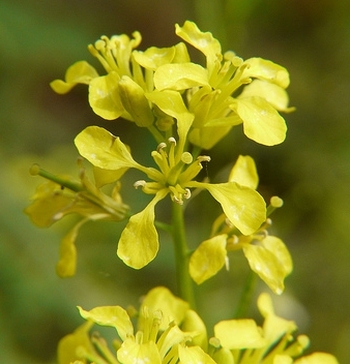
Brassica juncea (L.) Czern. & Coss.
Chinese mustard
Annual herbs up to 1 m high, with slender ascending branches. Stem hispid near the base but glabrous above. Lower leaves lyrate-pinnatisect, with 1 or 2 pairs of small, broad, lateral lobes and a large, ovate or obovate terminal lobe. Upper leaves are glabrous, smaller, simple, entire or dentate, shortly petiolate. Racemes terminal, dense in flower, lax in fruit. Flowers yellow, petals obovate, 7–9 mm long, almost 3 mm broad, shortly clawed. The fruiting pedicel is slender. Seeds globose, 16–24, brown, in one row. The seed coat is reticulately pitted. Native of southern and eastern Asia. Widespread as an established weed in the tropics and subtropics and as a casual weed in many parts of Europe and in the Eastern Cape, Free State, KwaZulu-Natal, Limpopo and the Western Cape in South Africa.
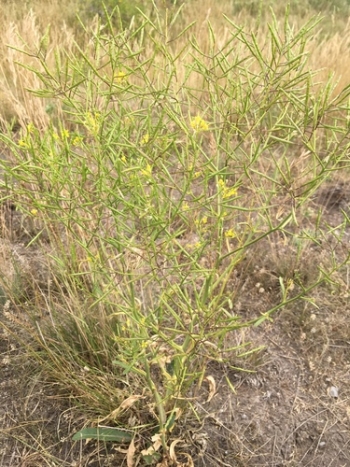
Brassica elongata Ehrh.
long-stalked rape, elongated mustard
The stems extend out from the base and are branched basally. The basal leaves are obovate to elliptic and their margins are sub-entire to dentate. The cauline leaves are oblong or lanceolate that are up to 100 mm long. Inflorescence is a terminal raceme. This species is native to parts of central and eastern Europe, Morocco and is naturalised in many parts of the world, including South Africa, Australia and North America. Genetically the species is a close cousin to B. napus (rapeseed) and secondary to B. oleracea (kale).
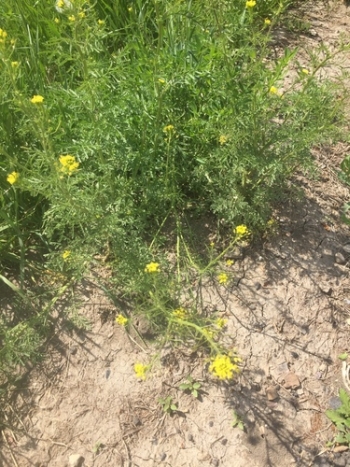
Brassica napus L.
rapeseed, canola
This is a bright yellow flowering member of the Brassicaceae. It is cultivated mainly for its oil-rich seed, the third largest source of vegetable oil in the world, and is also consumed as a vegetable in China. Wild forms of B. napus have been reported to occur on the beaches of Gothland, Sweden, the Netherlands and Britain. It is thought that B. napus is a hybrid of B. oleracea and B. rapa, the wild species found on the coast of northern Europe.
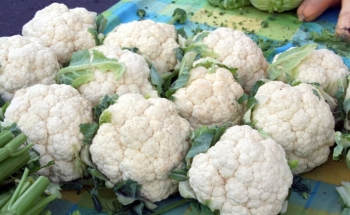
Brassica oleracea L.
wild cabbage, cabbage, broccoli, cauliflower
The wild species of Brassica oleracea is a tall biennial plant, forming a stout rosette of large leaves in the first year. Leaves are glabrous, fleshier and thicker than other species of Brassica. Racemes are 1–2 m tall, bearing numerous yellow flowers. It is the species of plant that includes many cultivars which are common foods, including cabbage, broccoli, cauliflower and Brussels sprouts. It is known as wild cabbage in its uncultivated form, native to coastal southern and western Europe.
Plant Attributes:
Plant Type:
SA Distribution:
Soil type:
Flowering season:
PH:
Flower colour:
Aspect:
Gardening skill:
Special Features:
Horticultural zones

Heliophila coronopifolia Willd
Family:
Common names: Blue Flax, Wild Flax, Showy Sunflax (E), Blousporrie, Sporries (A)
Plant Attributes:
Plant Type:
SA Distribution:
Soil type:
Flowering season:
PH:
Flower colour:
Aspect:
Gardening skill:
Special Features:
Horticultural zones

Cleome foliosa Hook.f.
Family:
Common names: Yellow glory, yellow spindlepod.
Plant Attributes:
Plant Type:
SA Distribution:
Soil type:
Flowering season:
PH:
Flower colour:
Aspect:
Gardening skill:
Special Features:
Horticultural zones

Cladostemon kirkii (Oliv.) Pax & Gilg
Family:
Common names: three-finger bush, butterfly-tree (Eng.); Tonga-kierie (Eng. & Afr.); umThekwini, umusi-iyamuka, uphanda, isidumbu (isiZulu)
SA Tree No: 131
Plant Attributes:
Plant Type:
SA Distribution:
Soil type:
Flowering season:
PH:
Flower colour:
Aspect:
Gardening skill:
Special Features:
Horticultural zones

Cadaba aphylla (Thunb.) Wild
Family:
Common names: leafless cadaba, leafless wormbush, black storm, desert spray (Eng.); swartstorm, bobbejaanarm, bloustam, doubos, douwurmbos, gifhoutjie, rooistorm, stormbos (Afr.); mfitshwana, mhitshwana, monnamontsho (TW), mudiatsiwana, tshikuni (V), usitorhom (X)
Plant Attributes:
Plant Type:
SA Distribution:
Soil type:
Flowering season:
PH:
Flower colour:
Aspect:
Gardening skill:
Special Features:
Horticultural zones

Boscia albitrunca (Burch.) Gilg & Gilg-Ben.
Family:
Common names: shepherd's tree (Eng.); witgat (Afr.); siPhiso (Sw), Mohlôpi (Northern Sotho); Xukutsi (Tswana); Muthobi (Venda)
SA Tree No: 122
Plant Attributes:
Plant Type:
SA Distribution:
Soil type:
Flowering season:
PH:
Flower colour:
Aspect:
Gardening skill:
Special Features:
Horticultural zones

Bachmannia woodii (Oliv.) Gilg
Family:
Common names: Four-finger Bush (E); Viervingerbos (Afr); umPhunzisa (X), umTswantswantsa (X)
SA Tree No: 121
Plant Attributes:
Plant Type:
SA Distribution:
Soil type:
Flowering season:
PH:
Flower colour:
Aspect:
Gardening skill:
Special Features:
Horticultural zones






Rate this article
Article well written and informative
Rate this plant
Is this an interesting plant?
Login to add your Comment
Back to topNot registered yet? Click here to register.